2nd Generation Offers Upgrades and Longer Driving Range
As the world’s best-selling electric vehicle, the Nissan Leaf is recognized as a leader in battery electric vehicles. But, as things go in life, being the leader means the competition is constantly nipping at your heals. Because, heck, who wants to be #2?
After seven years on the market, the first-generation Leaf has been replaced by the all-new 2018 Nissan Leaf. Revised styling, charging speed and a longer driving distance are only a few of the key changes to the second-generation Leaf. With the announcement that the 2019 Nissan Leaf will go even further, Nissan has jumped feet first into the tiered offering of electric vehicles.
Turning a New Leaf
Nissan brought journalists to the Napa Valley during the first week of December. A few hours of technical briefings were followed by drives through the vineyards. The presentations revealed the 2018 Nissan Leaf has many improvements, including:

- The new battery has the same physical size as the 2017 model, but packs more punch through scientific advances in battery density and chemistry
- A battery with 40kWh in the same space that previously had 30 kWh
- A bump in the AC motor from 80 kW to 110 kW
- New driving range of 150 miles
So, what does this all mean? The 110-kW electric motor puts out 147 horsepower, a 37-percent increase compared to its predecessor. Peak torque sees a 26-percent increase to 236 pounds-feet, delivered across a wider band, making for near-exciting launches and better acceleration when at cruising speeds. But for most drivers, the increase from a 112- to 150-mile driving range is what will get their attention.
The Chevrolet Bolt (currently available in all states) and the Tesla Model 3 (barely available in any states) both have a 200+ mile driving range. But that is it, as all other electric vehicles get between 100 and 125 miles on a charge (or less in some cases). Nissan told us that the 2018 Leaf with a 150-mile range is a “white space,” reassuring consumers that 150 miles is what they need for the vast majority of their driving needs. Clean Fleet Report agrees that this is well within 90-percent of what all people need for their driving pattern and lifestyle. But, everyone hears the sexy 200+ numbers from the Bolt and Model 3 and think that anything else is lacking. Thus, Nissan’s challenge is convincing these potential buyers that 150 miles is just fine.
Technology Abounds
As the auto industry creeps closer and closer to autonomous vehicles, the first steps are the development of advanced driver-assist features. Long ago this began with cruise control, but the advances in the past few years have been astounding. Nissan has had several driver-assist features on its cars for the past few years, but the 2018 Nissan Leaf comes with two new technologies: ProPilot Assist and e-Pedal. Nissan calls this its Intelligent Mobility, which is comprised of driving, power and integration elements.

The first of the new systems is ProPilot Assist, which Nissan repeatedly stressed is NOT autopilot. This system is hands-on and, when engaged, aids the driver keeping the Leaf entered between lane lines. If lane lines are faded or covered in mud or snow, the system automatically disengages.
It works very well, even when we did what Nissan said NOT to do, which was driving with hands off the wheel. We did this not to be disobedient, but to test the progressive warning lights and sounds that became more frequent and louder the longer our hands were off the wheel. The final test of the ProPilot Assist is that it will bring the Leaf to a complete stop if all the warnings are ignored. We were warned to be very careful with this final stage (we were), which truly demonstrated the benefits of this safety technology. ProPilot Assist is designed to help a sleepy or physically incapacitated driver safely bring the Leaf to a stop. Experiencing our Leaf go from 70 mph to 30 mph demonstrated how a person’s life could be saved.
The e-Pedal feature offers one pedal driving, which Nissan says reduces “the need to switch between accelerator and brake pedals.” This is accomplished by first setting the system with the center console-mounted button. Then, acceleration, deceleration, stopping and even holding at a stop are all controlled by the pressure applied to the accelerator pedal. The ‘stop’ feature, even up to a 30-percent grade, is an industry first.
Leaf On the Road
When Clean Fleet Report reviewed the previous generation Leaf we found the ride was smooth and quiet, with good handling for a car not designed to be sporty. For 2018, Nissan has improved the drivability by placing the “heavy components, including the battery…in the center of the body.” This then improves “directional stability, enabling smoother cornering.” We agree.
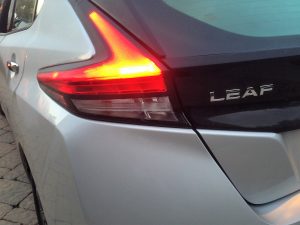
What really made the drive interesting was using the e-Pedal, where we experienced the one pedal driving Nissan touted. One of the things about new driver assist technologies is that a trust level needs to be established real, real fast. We had no problem adapting to–and trusting-this unique system.
Our test drive began on the very scenic Silverado Trail, the 29-mile two lane road on the Eastern side of the Napa Valley that runs from Napa to Calistoga. Known for weekend bumper-to-bumper traffic of wine tasters, we were fortunate to hit it during the week when slow-poke winery visitors did not impede our testing the curves and twisties.
What we found was the 2018 Nissan Leaf’s suspension has been improved, to the point where we actually can say the car was fun to drive. It was easy to point the Leaf where you wanted it to go–and it stuck. The electric power steering has been recalibrated for improved road feel and feedback. Nissan says the urethane bump stops for the rear suspension have been replaced by rubber stops, which reduce shocks and bumpiness on uneven surfaces. It must have worked because we felt none of those on our drive.
Out on Highway 101 our drive took us through the redwoods, where the ride was smooth and confident. Confident, because this is where we tested the ProPilot Assist. It did what we were told it would do: keep us centered between the white painted lines.
In summary, driving new technology through vineyards and majestic redwoods was a perfect way for us to get a feel for the 2018 Leaf. Your dealer test drive may not be as bucolic and scenic, but we are confident you can replicate our experience.
New Leaf – New Design

The first-generation Leaf was known for its very unique design, which included those interesting headlights that were oh-so-aerodynamic, but also not pleasing to many people. With the all-new 2018 Nissan Leaf, those headlights are a thing of the past.
The 2018 Leaf has a modern design that, while still recognizable as a Leaf, does not scream: “I am different!” It softly says: “Hey, check me out.” The new design is softer and sleeker, especially of note is the “floating roofline” that gently sweeps back to the rear hatch.
The interior has been completely reworked as well. The gauges are easier to understand than the previous model, with everything well within the driver’s outstretched arm. The seats were supportive, leg and headroom were ample. We would be remiss if we did not thank Nissan for the radio volume and channel knobs. There’s nothing worse than when a car company tries to get too modern by thinking radio controls should be like your smartphone–all swipe and pinch.
Model Line-up
The 2018 Nissan Leaf will come in three models. The MSRP (Manufacturer’s Suggested Retail Price) for the three, not including the $885 destination and handling fee are:
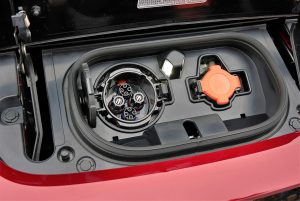
Leaf S $29,990
Leaf SV $32,490
Leaf SL $36,200
Depending where you live and your taxable income, you could potentially reduce your final cost by as much as $10,000 through federal and state programs. It is recommended contacting your CPA before considering a Leaf purchase so you are completely clear on the tax credits and rebates. Not relying on the dealer to provide this information will serve them and you best.
For those in California, the Leaf automatically qualifies for the coveted HOV sticker which allows solo driving in the Carpool lane. If you haven’t heard the stories, people buy the Leaf just for this benefit.
Observations: 2018 Nissan Leaf
Announcements from car manufacturers are eagerly awaited, especially the launch of a “next generation” model. But when the new version is replacing a category leader our attention is piqued, as there is so much that can go wrong by tinkering with a sales success. Nissan need not worry, as the all-new 2018 Nissan Leaf hits multiple marks with its design evolution and technology advancements.
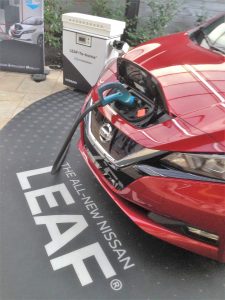
Clean Fleet Report will have the opportunity in the coming months to drive the 2018 Leaf for a week or more. At that point, we will do a deeper dive on the ProPilot and e-Pedal technologies and will review the regenerative braking, charging and the very cool “Leaf To Home” charging system. The telematics and infotainment systems have been upgraded, such as your being able to give commands to Amazon’s Alexa that control certain settings on the Leaf. All very futuristic stuff that is becoming available right now.
Until then, you can set an appointment with your local Nissan dealer to take a test drive with one of their factory-trained EV specialists. We think you will be pleased with what you find.
Whatever you end up buying, enjoy your new car and as always, Happy Driving!
Make sure to opt-in to the Clean Fleet Report newsletter (top right of page) to be notified of all new stories and vehicle reviews.
Related Stories You Might Enjoy:
News: 2018 Nissan Leaf Production Starts in US
News: Second Generation Nissan Leaf Introduced
Road Test: 2016 Nissan Leaf (Michael’s view)
Road Test: 2016 Nissan Leaf (John’s view)
Road Test: 2017 Volkswagen e-Golf
Road Test: 2017 BMW i3
Road Test: 2017 Hyundai Ioniq
Personal: My Chevrolet Bolt EV, a 6-Month Update
Road Test: 2017 Fiat 500e
Road Test: 2016 Ford Fusion Electric
Disclosure:
Clean Fleet Report is loaned free test vehicles from automakers to evaluate, typically for a week at a time. Our road tests are based on this one-week drive of a new vehicle. Because of this we don’t address issues such as long-term reliability or total cost of ownership. In addition, we are often invited to manufacturer events highlighting new vehicles or technology. As part of these events we may be offered free transportation, lodging or meals. We do our best to present our unvarnished evaluations of vehicles and news irrespective of these inducements.
Our focus is on vehicles that offer the best fuel economy in their class, which leads us to emphasize electric cars, plug-in hybrids, hybrids and diesels. We also feature those efficient gas-powered vehicles that are among the top mpg vehicles in their class. In addition, we aim to offer reviews and news on advanced technology and the alternative fuel vehicle market. We welcome any feedback from vehicle owners and are dedicated to providing a forum for alternative viewpoints. Please let us know your views at publisher@cleanfleetreport.com.

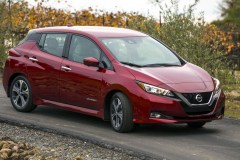

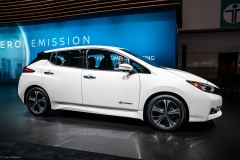

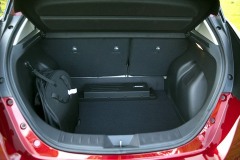
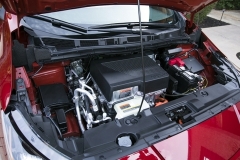
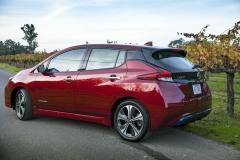
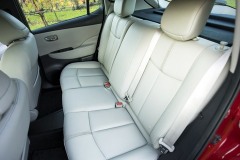
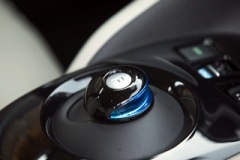
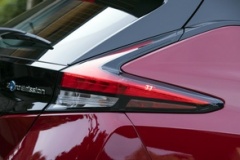
8 thoughts on “Flash Drive: 2018 Nissan Leaf”